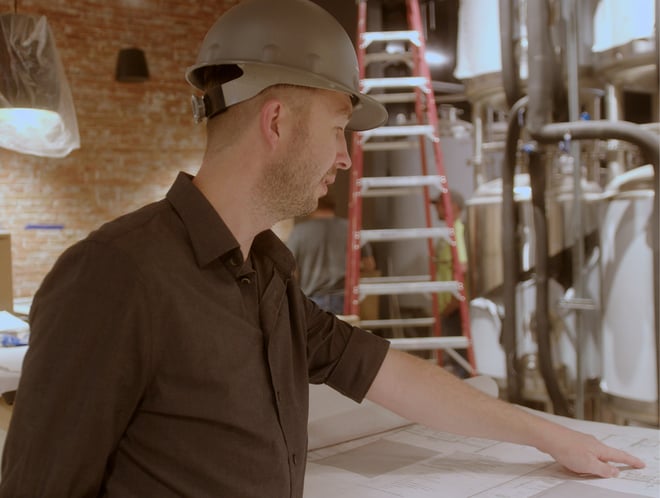What to Expect from Your Architect During a Site Observation

For building owners, construction is one of the most nerve-racking parts of the architectural process. Although it’s exciting to see your project come to life, the construction process presents many unknowns. Your architect should guide you through the process and coordinate communication.
During construction, your architect will visit the site, observe the progress, and see that the project is built to the design intent. These visits are known as “site observations” and can occur weekly, biweekly, or monthly depending on your project’s scope and your agreement with your architect.
This article will explain how a site observation works and what you can expect from your architect, helping you prepare for the construction process.
An Architect’s Role in Construction
Before explaining site observations, it helps to understand an architect’s role in construction. Although some think architects drop the pen after they complete the contract documents, they often play an active role in the construction process.
Throughout construction, architects act as Contract Administrators. Their job is to review the completed work and make sure it matches the drawings and specifications submitted in the contract documents.
At the same time, they are there to advocate for your interests. They facilitate communication between building owners and contractors, review payments, process change orders, and handle disputes.
What to Expect from a Site Observation
Site observations, also known as “site walks,” occur on a weekly, biweekly, or monthly basis. Their frequency depends on your location and the complexity of the project.
The more complex the project, the more often the architect should visit the site. For example, a project with more unknowns, like a renovation, may require additional site observations.
The number of times your architect visits the site also depends on your contract. You can ask your architect to visit the site more often, though this may add to Contract Administration costs.
Most site observations include the contractor, architect, and building owner. Consultants like Structural, Mechanical, Electrical, and Plumbing (MEP) engineers can also join site observations at key moments in the process.
We always recommend that the owner or an owner’s representative joins the observation. Seeing the progress firsthand aids communication and helps you better understand deadlines and contractor payments.
During the observation, you can expect a few key deliverables from your architect.
Review Progress
Site observations are not official “inspections.” Instead, your architect visits the site to make sure progress is on track and gauge whether the contractor is delivering the project to its specifications.
An architect’s primary role is to identify discrepancies between the contract documents and the completed work. If they notice any discrepancies, they will highlight them in an Observation Report and request that the contractor addresses them.
Occasional changes to the contract documents are normal. In these situations, the contractor should address the change through a change order that your architect will discuss with you before approving. Setting aside a construction contingency helps you prepare for any potential changes.
Along with discrepancies, your architect will also note any damages the contractor should address.

Your architect will check that the completed work matches the contract documents.
Check that Progress Matches Payment
A site observation is also a chance for your architect to check that the progress matches the contractor payment. Throughout the construction process, you will pay the contractor based on the amount of completed work. Your architect should make sure the work aligns with the requested payment.
For example, if the contractor charges 50% for drywall completion but has barely started the work, your architect should make sure the payment is adjusted. Although these situations are rare, an extra set of eyes helps assure you are charged accurately throughout the project.
Facilitate Communication
Your architect also visits the site to facilitate communication between you and the contractor. Construction can be long and complex, so it helps to have someone who speaks the lingo to align expectations.
If problems arise, your architect acts as your advocate. They should mitigate disputes and work to make sure the final project reaches your expectations and goals.
Ready to Learn More?
Construction can feel daunting. When you visit the site, you will see many moving parts at various stages of completion. It can be difficult to tell if everything is progressing as intended.
A site observation is a chance to touch base and make sure everything is running smoothly. Your architect is your expert set of eyes, observing the progress and checking that it matches the design intent. If they notice any discrepancies, they will note them in an Observation Report and facilitate communication with the contractor.
If you ever feel concerned about construction, talk with your architect. By visiting the site often, they can help address your concerns and mitigate risk.
To further prepare for construction, read about the problems that delay construction timelines and how to address them.